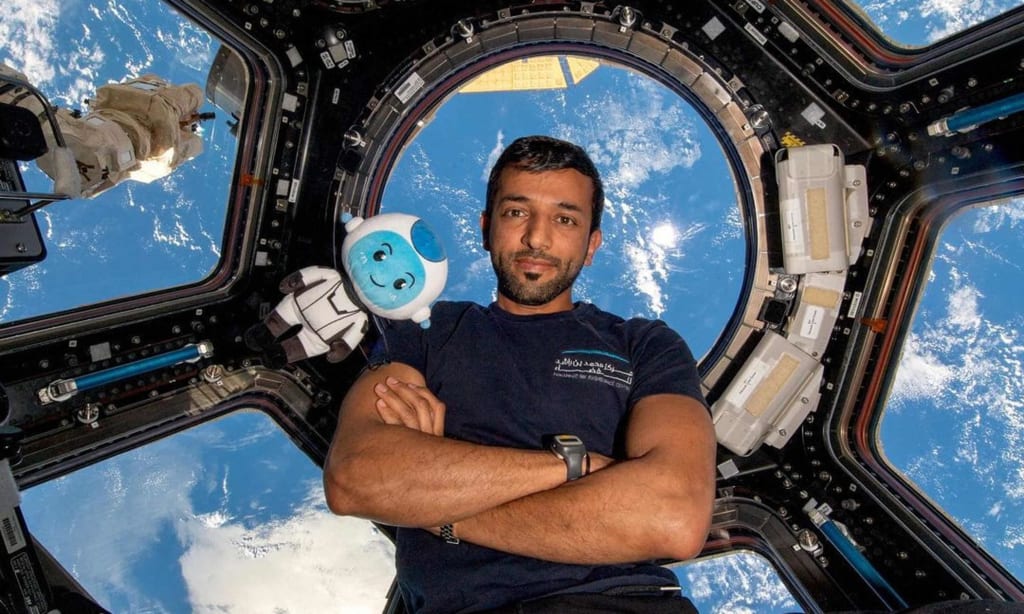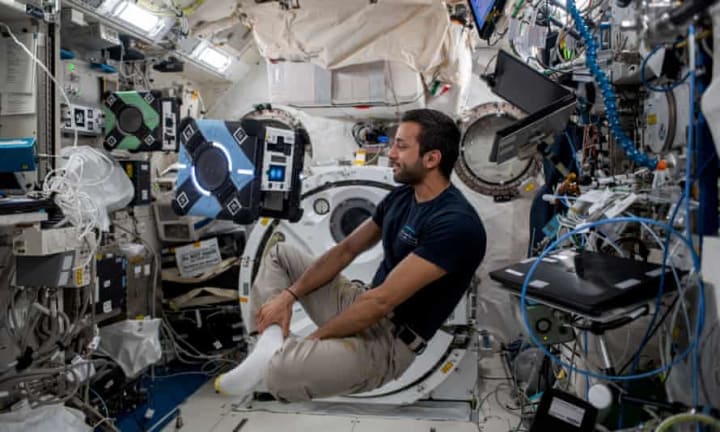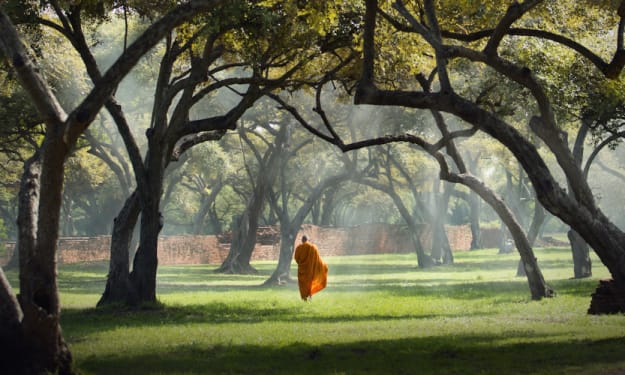UAE astronaut on longest-ever Arab space mission: "A big responsibilIty"
Longest Space Mission in History

The songs of the late Egyptian superstar Umm Kulthum have been played countless times in cabs and coffee shops around the Arab world because they are profound and soul-stirring. They have now made their way to the antiseptic white corridors of the International Space Station, owing to the musical preferences of a trailblazing Emirati astronaut.
Sultan al-Neyadi, who will make history this weekend by completing the longest Arab space mission ever, told the Guardian from space that he believed it was important to convey a piece of Arab culture to space during the journey.
Neyadi, who was floating in microgravity, stated in a recorded video message that "everyone is watching us; everybody is excited about space." Many of my coworkers have said how great it is to hear a foreign language on the station, I overheard.
The majority of the few hundred people who have crossed the border of space have been Americans, and NASA-trained astronauts or Russian cosmonauts have dominated celestial flight for decades. Only six Arabs have been to space so far; they are now referred to as "aquanauts" after the Arabic word for star, "najm".
Neyadi has used his six-month stay on the International Space Station (ISS), which orbits the Earth at a speed of around 17,500 mph (28,000 km/h) and an altitude of about 250 miles (400 km), to conduct crucial scientific experiments as well as to introduce the Arab world to the marvels of space.
The 42-year-old flight engineer has frequently uploaded videos in Arabic to social media about life on board the space station, detailing his peculiar daily routine, which includes eating vacuum-packed food and exercising in a "weightless" environment with a machine that generates its resistance.
When asked whether he felt pressure as one of a small group of aquanauts to encourage interest in space exploration and science among people in the Middle East and North Africa, Neyadi responded to the Guardian that there is a sizable audience in the Arab world that is "thirsty to learn more about space."
We must impart information and present these results to them clearly and engagingly, he added. "In particular, the youth... I would like to be a resource for them—a source of knowledge and motivation. Therefore, it's a huge duty.
Neyadi has also given the world's space enthusiasts a new point of view by snapping pictures of famous places and Middle Eastern cities that honor a region that is sometimes unfairly characterized in the West.

Early on in his journey, Neyadi tweeted, "Here is the beautiful and historical city of Baghdad, the cornerstone of the golden age of knowledge." Scholars from this magnificent metropolis ignited the fires of discovery and charted the road for contemporary science. Their legacy serves as a reminder to keep aiming high.
He painted another picture of the Lebanese capital, in which Beirut was referred to as "the city that breathes art, culture, and beauty," while the Suez Canal was referred to as the "heart of global trade... [that] has brought continents closer for over 150 years."
His pictures, which were shot using a camera in the "cupola" of the space station, a tiny module with six side windows that gaze out toward Earth, have generated a lot of internet enthusiasm. Several individuals responded, and they expressed happiness and excitement at seeing their location being tweeted from space. Additionally, a lot of individuals wanted to see images of their nations or cities from space. Therefore, including an audience in space activities is extremely important.
Neyadi recorded himself throughout his protracted journey doing Qur'anic prayers and celebrating the Muslim holiday of Eid al-Fitr in space while donning a white Emirati bandura, a traditional long gown. In another video, he glides past the station while Umm Kulthum's voice is playing in the distance.
He informed the Guardian, emphasizing the term "international," that this location was known as the International Space Station. "We have a big audience that needs to understand from both sides—an Arab astronaut living and working on the station, then they learn about the culture that we are from and the region," the author said.
The najmanaut, who attended the University of Brighton before joining the UAE Armed Forces, has achieved several firsts in space, including being the first Arab to complete a seven-hour spacewalk, even though he claims he "really didn't feel" the passing of time.
The first Arab woman in space, Rayyanah Barnawi, and Ali al-Qarni from Saudi Arabia joined Neyadi on an eight-day journey in May. Three Arabs were present in space together for the first time at the same time.
The appearance of his two colleagues, according to Neyadi, was "really surreal." "It was amazing just to think of two, or three in that case, astronauts meeting in space and speaking Arabic."
Neyadi was getting ready for his comeback a few months later. While his thoughts are already on earthly delights, he is scheduled to leave on Saturday and won't be back on the ground until Sunday. He said, "I'm going to take a hot shower first, and then I'm going to make a real cup of coffee."
About the Creator
Enjoyed the story? Support the Creator.
Subscribe for free to receive all their stories in your feed. You could also pledge your support or give them a one-off tip, letting them know you appreciate their work.





Comments (1)
Amazingly interesting